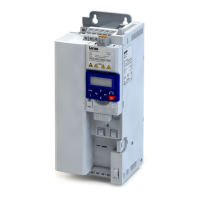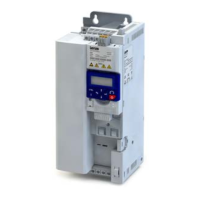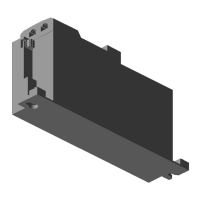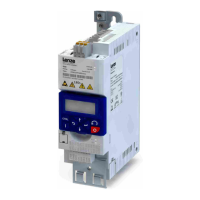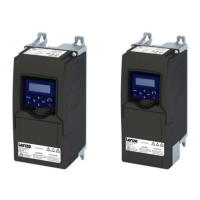Cables
Requirements
•
The cables used must correspond to the requirements at the locaon (e. g. EN 60204−1,
UL).
•
The cable cross-secon must be dimensioned for the assigned fusing. Observe naonal
and regional regulaons.
•
You must observe the regulaons for minimum cross-secons of PE conductors. The cross-
secon of the PE conductor must be at least as large as the cross-secon of the power
connecons.
Installaon inside the control cabinet
•
Always install cables close to the mounng plate (reference potenal), as freely suspended
cables act like aerials.
•
Use separated cable channels for motor cables and control cables. Do not mix up dierent
cable types in one cable channel.
•
Lead the cables to the terminals in a straight line (avoid tangles of cables).
•
Minimise coupling capacies and coupling inductances by avoiding unnecessary cable
lengths and reserve loops.
•
Short-circuit unused cores to the reference potenal.
•
Install the cables of a 24 V DC supply (posive and negave cable) close to each other or
twisted over the enre length to avoid loops.
Installaon outside the control cabinet
•
In the case of greater cable lengths, a greater cable distance between the cables is
required.
•
In the case of parallel roung (cable trays) of cables with dierent types of signals, the
degree of interference can be minimised by using a metallic cable separator or isolated
cable ducts.
Earthing concept
•
Set up the earthing system with a star topology.
•
Connect all components (inverters, lters, chokes) to a central earthing point (PE rail).
•
Comply with the corresponding minimum cross-secons of the cables.
•
When using several mounng plates, make a conducve connecon over a large surface
(e. g. using grounding strips).
Informaon on project planning
Control cabinet structure
Earthing concept
40
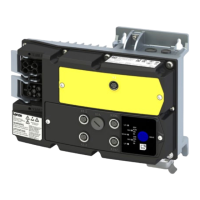
